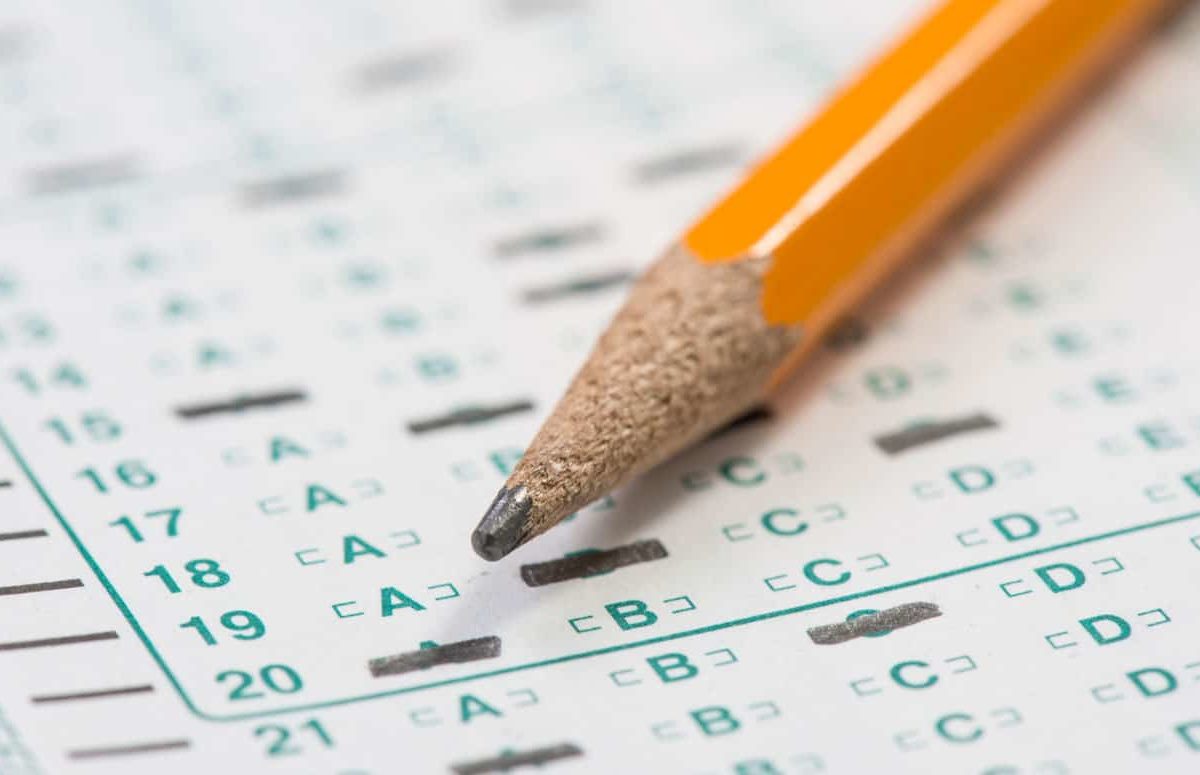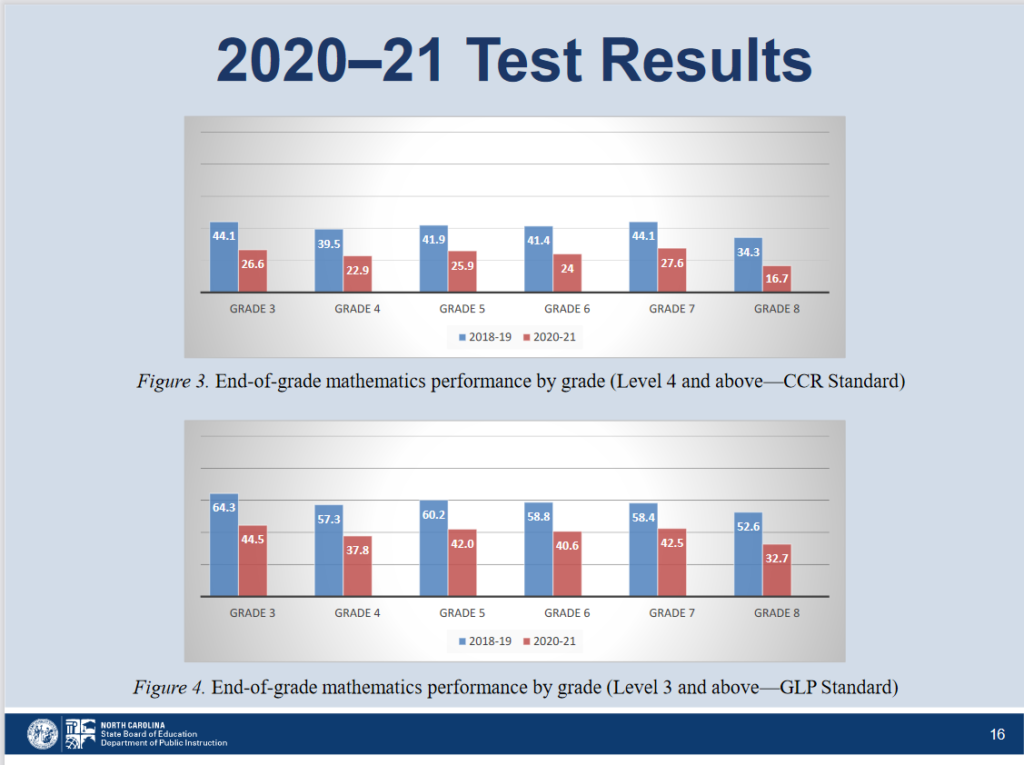
|
|
The release of year-end test scores for the 2020-21 school year confirmed what many parents and educators suspected: Statewide scores were down across all tests.
Students didn’t have to take these standardized year-end tests at the end of the 2019-20 school year, which was disrupted by the beginning of the pandemic in March. They did take tests this past school year, but these scores won’t be used for most accountability measures thanks to waivers from the state and federal governments.
The Department of Public Instruction released results from these tests at Wednesday’s State Board of Education meeting. Now heading into the third year of school impacted by COVID-19, these results present a picture of where students are and can be a guide for educators as they try to identify gaps.
“We’re still in a pandemic, and these results allow the Board, DPI, local districts, and charter schools to determine the extent of learning in the prior year and plan appropriately for student learning this year,” Board Chair Eric Davis said. “These results show the resilience of our students and the dedication of teachers and others to persevere in spite of many disruptions to learning.”
The full test results report is online. For results broken down by district and school, go here.
These reports include:
- Performance information on end-of-grade and end-of-class tests, disaggregated by various categories, including race
- Scores for 11th grade students who took the ACT
- Results for students who participated in WorkKeys
Results are reported for the percentage of students who score a Level 3 or higher, which is deemed grade-level proficient, and a Level 4 or higher, which is deemed college and career ready. The report compares this year’s test scores to the 2018-19 school year. This is for context, not accountability purposes.
In their presentation to the State Board, DPI pointed out that the requirement that 95% of students participate in year-end testing was waived last year, and students took exams over a longer time period than usual.
All tests had a participation rate of 90% or higher.
One of the biggest findings is that student scores were down across all year-end tests. In many of the assessments, fewer than half of the students were meeting grade-level expectations.




Some measures, however, remained stable.
For example, the number of students who met the ACT score minimum for UNC System schools (17) only fell by 0.6 percentage points since 2019. The class of 2021 graduation rate was 86.9%, down from 87.6% in 2019-20 but up from 86.5% two years earlier.
Many schools also saw the majority of their students meet grade-level expectations. In the schools below, more than 95% of students earned grade-level proficient scores, putting them at the top of the state:
- Nesbitt Discovery Academy in Buncombe County Schools
- Highland School of Technology in Gaston County Schools
- Brown Summit Middle School in Guilford County Schools
- The Early College at Guilford in Guilford County Schools
- Haywood Early College in Haywood County Schools
- Henderson County Early College in Henderson County Schools
- Collaborative College for Technology & Leadership in Iredell-Statesville Schools
- Onslow Early College in Onslow County Schools
- Pender Early College in Pender County Schools
- Wake STEM Early College High School in Wake County Schools
- Metrolina Regional Scholars Academy, a charter school in Mecklenburg County
As educators, state officials, and policymakers analyze last year’s testing data, the question now is about how to address learning loss.
Board member Jill Camnitz said the release of this information is just a first step.
DPI will work on a learning loss report to present to the Board in March 2022 that will consider more data and information.
“It truly demonstrates the impact teachers have on their students when we have them in person in our classrooms,” said Board member Maureen Stover, the 2020 Burroughs Wellcome Fund North Carolina Teacher of the Year.
Because this data won’t be used for accountability measures, Board members hope teachers and parents can use the results to target resources.
Districts have until Sept. 10 to request data corrections from DPI.





